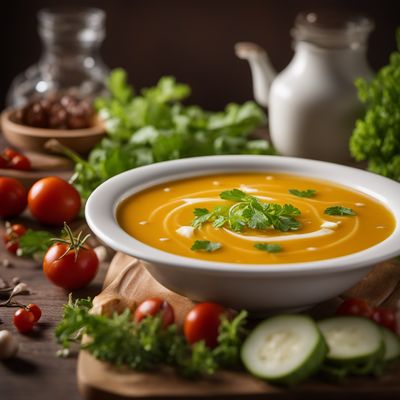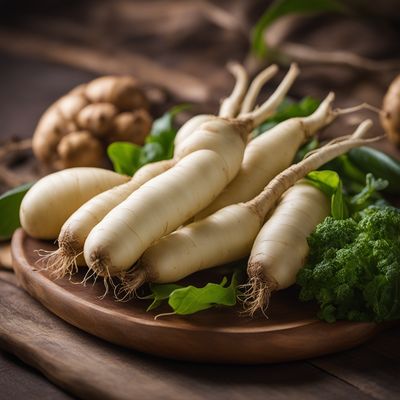
Ingredient
Composite dishes
The Art of Culinary Fusion: Exploring Composite Dishes
Composite dishes are a celebration of diversity on a plate. They are meticulously crafted culinary creations that bring together a multitude of ingredients, textures, and flavors to create a symphony of taste. These dishes often feature a combination of proteins, vegetables, grains, and sauces, resulting in a complex and layered eating experience. From the vibrant colors to the contrasting textures, composite dishes are a feast for the senses. Each bite offers a delightful surprise as the flavors meld together, creating a truly unforgettable dining experience.
Origins and history
The concept of composite dishes can be traced back to ancient civilizations where different cultures and regions influenced each other's culinary traditions. Throughout history, trade routes, colonization, and migration have played a significant role in the development of composite dishes. The Silk Road, for example, facilitated the exchange of ingredients and cooking techniques between Asia, the Middle East, and Europe, leading to the creation of fusion dishes that combined the best of each region. Today, composite dishes continue to evolve as chefs push the boundaries of culinary creativity, drawing inspiration from global cuisines.
Nutritional information
Composite dishes provide a balanced and nutritious meal, offering a wide array of essential nutrients. The nutritional content varies depending on the specific ingredients used, but they often include a combination of proteins, carbohydrates, healthy fats, vitamins, and minerals.
Allergens
The allergens associated with composite dishes can vary greatly depending on the specific ingredients used. Common allergens to be aware of include gluten, dairy, nuts, shellfish, and soy. It is important to check the ingredients and inform individuals with allergies before serving composite dishes.
How to select
When selecting composite dishes from a restaurant or caterer, it is essential to consider the reputation and expertise of the establishment. Look for restaurants that specialize in fusion cuisine or have a diverse menu that showcases their ability to create composite dishes. Additionally, read reviews and seek recommendations from trusted sources to ensure a high-quality dining experience.
Storage recommendations
Composite dishes are best enjoyed fresh, as their complex flavors and textures may deteriorate over time. If leftovers are unavoidable, store them in airtight containers in the refrigerator for up to 2-3 days. However, it is important to note that some composite dishes may not retain their original quality after being refrigerated.
How to produce
Creating composite dishes at home requires a deep understanding of different culinary traditions and techniques. Amateur cooks can start by experimenting with fusion recipes that combine ingredients and flavors from different cuisines. It is important to maintain a balance between the various components and ensure that the flavors complement each other. Building a strong foundation in basic cooking techniques and understanding the flavor profiles of different ingredients will greatly aid in the creation of successful composite dishes.
Preparation tips
When preparing composite dishes, it is crucial to carefully plan and organize the various components. Start by prepping all the ingredients in advance and ensure that they are cooked to the desired texture and doneness. Pay attention to the balance of flavors and textures, aiming for a harmonious combination. Experiment with different ingredient combinations and cooking techniques to create your own unique composite dishes.
Culinary uses
Composite dishes are incredibly versatile and can be found in various cuisines around the world. They are commonly seen in fusion restaurants that blend different culinary traditions, such as Asian fusion, Mediterranean fusion, or Latin fusion. Composite dishes can range from sushi burritos and Korean tacos to paella with a twist or Thai-inspired pasta dishes. The possibilities are endless, allowing chefs to showcase their creativity and offer diners a truly memorable dining experience.
Availability
Composite dishes are available in regions and countries with a diverse culinary scene and a willingness to experiment with fusion cuisine. Major cities around the world, such as New York, London, Tokyo, and Melbourne, are known for their vibrant food scenes and offer a wide range of composite dishes.
More ingredients from this category

Soups and salads
Savory Creations

Tropical root and tuber vegetable dishes
Exotic Roots: Unveiling the Vibrant World of Tropical Root and Tuber Vegetable Dishes

Fried or extruded cereal, seed or root-based products
Crunchy Delights: Exploring Fried or Extruded Cereal, Seed, or Root-Based Products

Spoonable desserts and ice creams (generic)
Indulgent Frozen Delights

Dishes, incl. Ready to eat meals (excluding soups and salads)
Convenience Meets Flavor: Exploring Ready-to-Eat Meals